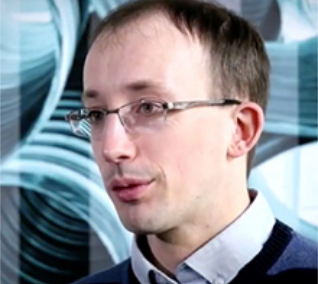Keywords: Transport; Decarbonisation; Pathways; Scenarios; Strategies
The study assessed outputs from the NISMOD transport model to investigate the effects of population change on travel demand, and the subsequent impact of different sets of options, or ‘Pathways’, to help achieve the zero-carbon target for transport in England’s Economic Heartland by 2050.
Research question & scope
One of the main ambitions set out in England’s Economic Heartland’s (EEH) Transport Strategy is for the region’s transport system to be ‘net-zero carbon’ by 2050, implying a substantial change in the vehicle fleet towards zero-emission vehicles, coupled with technological solutions to improve both vehicle efficiencies and the use of the road and rail networks, and promoting behaviour change of drivers and passengers to reduce the number and nature of motorised trips in the region. Using outputs from the NISMOD Transport model, this research assessed a range of different approaches to reach this challenging target, by considering alternative ‘Pathways to Decarbonisation’, each of which focuses on a specific approach to change the way that people travel in the future.
Methodology
EEH has provided data on planned housing developments for each local authority in the region, suggesting that housing growth is predicted to be 27,660 new houses per year, resulting in a total of around 885,000 new houses between 2020 and 2050. Combining these estimated housing figures with projected changes in household occupancy levels, we can generate the EEH future population growth scenario, which projects an extra 1.7 million residents of EEH in 2050, which is around 0.4% per year higher than ONS projections, and much more intensively and variably distributed (see Figure 1).
Figure 1: Population change comparison between EEH scenario and ONS population projections.
For all Pathways (except BaU) we assume that 100% of motor vehicle traffic in 2050 is made up of zero-carbon vehicles, and that there are differences in the rapidity and nature of technological change, vehicle efficiencies and network capacity utilisation via autonomous vehicles, depending on the Pathway. The Pathways assessed are as follows:
- Pathway 1: Business as Usual (BaU) – a ‘baseline’, based on recent (pre-COVID-19) trends in transport demand, resulting in 46% zero-carbon cars and 25% zero-carbon LGVs in 2050.
- Pathway 2: Highly Connected (HC) – increased use of digital communications and embedded technologies change the way the transport network is used, with more sophisticated vehicle routing systems, high levels of automated vehicles and cooperative traffic management systems. Passenger transport trip rates are lower as digital communications technologies reduce the need for physical travel.
- Pathway 3: Adapted Fleet (AF) – rapid technological development of the vehicle stock, such as hybrid transmission and regenerative braking, result in more fuel-efficient vehicles, while advances in materials science lead to the production of lighter construction materials.
- Pathway 4: Behaviour Shift (policy-led) (BSp) – behaviour change away from single occupant car driving towards more intensive use of fewer vehicles achieved through road pricing and education measures, promoting more sustainable transport modes and active travel.
- Pathway 5: Behaviour Shift (results-led) (BSr) – assume that societal change takes place, regardless of policy choices, resulting in a reduction in vehicle ownership and increased car sharing and modal shift to public transport.
The differences between the Pathways for the rate of change of fuel types in cars are shown in Figure 2.
Figure 2: Proportion of car engine types for all Pathways.
Results
Here, we present some of the results for emissions and congestion.
Emissions
The total CO2 tailpipe emissions for the region are shown in Figure 3. The rate of decline is linked with the assumed levels of electric, hybrid and hydrogen fuel cell powered vehicles in the fleet, as well as fuel efficiencies, and as we assume that all vehicles in non-BaU Pathways are zero emission by 2050, there are no emissions in 2050 for these Pathways. Note that there is a steady reduction in CO2 for BaU as vehicles become more fuel efficient and more electric vehicles enter the fleet.
The differences between the other Pathways are generally related to vehicle kilometres, although emissions drop off more rapidly for the Adapted Fleet Pathway, in which fuel efficiencies are improved more quickly, and there is a slightly more rapid conversion to zero-emitting vehicles.
Figure 3: CO2 emissions in EEH by Pathway and year.
Congestion
The transport model is able to produce average hourly estimates of link travel times and speeds, which can be compared with free-flowing traffic to give a representation of the levels of congestion within the network. Figure 4 shows the daily profile of average speeds in the EEH road network.
Figure 4: Average traffic speeds in the EEH road network, by Pathway.
Compared with the 2015 baseline, the increased levels of traffic result in a generally slower network for all Pathways in 2050, with the morning peak average speed reduced to around 63 kph compared to around 80 kph in 2015. The effect of fewer vehicle kilometres in the Behaviour Shift (policy-led) Pathway can be seen, since the average speeds are slightly higher in 2050 compared with the other Pathways with higher traffic flows.
Key findings
The Pathways assessed in this study offer distinct approaches to achieving zero-carbon transport by 2050. There are inevitably overlaps between these Pathways. For instance, the impact of increasingly sophisticated interactions between vehicles, transport network, homes and businesses is likely to be a strong driver of change in all possible futures, and we consider it explicitly in Behaviour Shift (policy-led) and Highly Connected Pathways.
The measures and interventions contributing to each Pathway change travel demand. Road pricing measures help to reduce demand, while our assumptions regarding autonomous vehicles provide higher road capacities, so more vehicles can use the same road network, resulting in higher flows. Population growth adds continuing pressure to the transport network, and levels of congestion are expected to increase as population grows.
We have shown that delivering a zero-carbon transport system by 2050 is a challenging target. Measures to change travel behaviour, through increased costs or promoting of sustainable transport modes could help reduce the overall demand on the transport network, but it will require significant effort through governance, legislation and public will to effect such large scale changes.
Impact
Contributing to the evidence-base for EEH’s Transport Strategy developed during 2020.
Institutions:
University of Southampton, University of Oxford, England’s Economic Heartland


